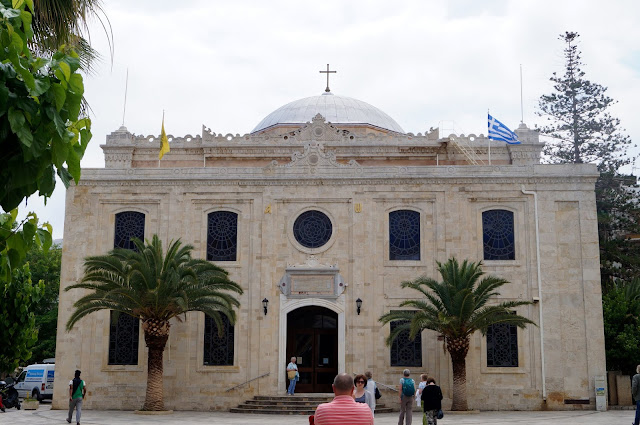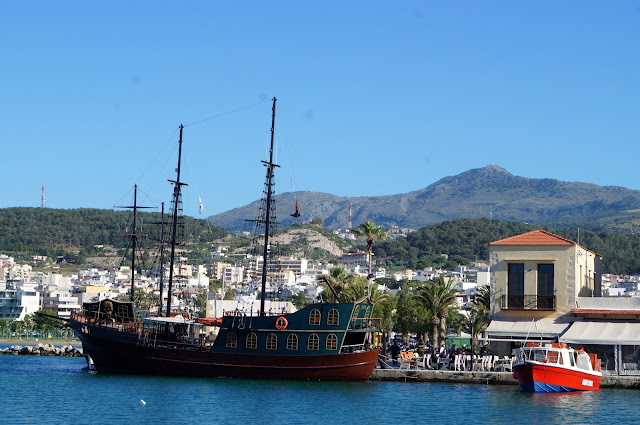Lybarinth of Heraklion, Crete
My knowledge of Greek history was
non existence. There were a few familiar names/characters that rang a bell but
nothing more. A quick tour of the Palace of Knossos at Heraklion Crete made me
want more than just a familiar ring. This change in my heart was all due to the
most amazing story teller of a guide who took us around this largest bronze age
archaeological site. I was clueless about the Minoan civilization and its
culture. Forget about the neolithic settlements that made this place as their
base as early as 7000 BC. Mind boggling History!! I cannot recreate the
stories that the guide engaged us with, but of course can share the
pictures.
The palace complex has multiple buildings and served as religious civic
and economic center.One of first things that stuck me was when we were told
that what we experience in this complex is a reproduction based on the
interpretation of archaeologist Sir Authur Evans. Opinions about its accuracy
varies but for me it was a step back in time irrespective of the facts.
What is
more exciting is that the ruins of Knossos Palace are the cultural
heart of Greek Myths Theseus fighting the Minotaur, Ariadne and her ball of
string, Daedalus the architect and doomed Icarus of the wax wings. Does
sound Greek and Latin! This palace also happens to be the origin place
for the word Labyrinth. History turned from drab monochromatic picture to
a kaleidoscopic one , thanks to our guide. I wish more history
teachers were like this lady whose name i have long since forgotten. Wishing you
all the luck, lady...wherever and whoever you are. You did make my day!
A reproduction of Minoan Column. Originally constructed of cypress tree and painted red
Pithoi or storage Jars that held oil, grains, dried fish beans and olives. These jars were stored in large number of store rooms called magazines
The Minoan civilization like the modern one loved high color. Red being the predominant color with splashes of white , black, blue, yellow and green. The Frescoes adorn the wall and generally depicted people, mythological creatures, real animals, rocks ,vegetation and marine life.
The center piece of the palace - The throne room with the mythological character Griffin Couchant
Reconstructed Fresco of Dolphins in what is considered to be the queens bedroom with storage areas , bath and toilet.
The most popular North entrance
The city of Heraklion has a history seeped in the Arabs, byzantine forces ,the Venetians and the ottomans. What we mostly see now is the mark left behind by the Venetians. The introduction to this port city was through part of fortification of Castello A mare located at entrance of old port. A sprinkle of Byzantine churches against Venetian balconies and fountains, the drive along the Agean sea or the walk along the happening street in the city center 25th augoustou is all that can one take in at Heraklion.
Koules Fortress
The Ottoman Vezir Mosque (1856) built on the site of the church of St Titus, ans now the Basilica of St Titus
City center with a view of Agean Sea Interiors Of St Titus
The typical Venetian architecture City Center
Port of Rethymno
The few hours we spent at Hotel Galaxy was not sufficient to sink our teeth into its facilities. So less said the better. Our next Stop was at the city of Chania. We had a quick break at the port of Rethymno on the way. Another picturesque port. Another light house, few more Sea food restaurants and an option here and there for the vegetarians. Chania, Here we come!
May 2017
Heraklion, Greece
The Travel Connection: History, a look back in time
Tip: Wish you get a guide as good as the one we had.
Tip: Wish you get a guide as good as the one we had.























Comments